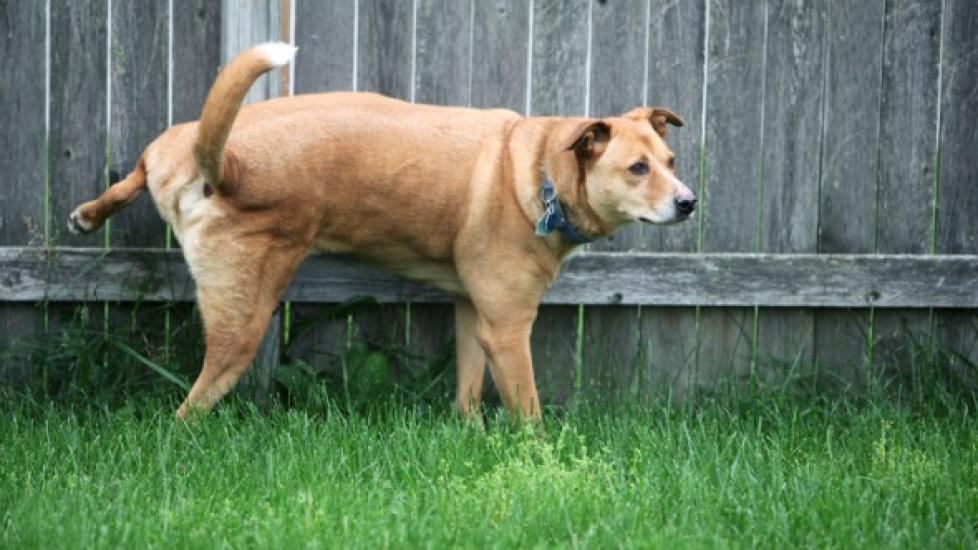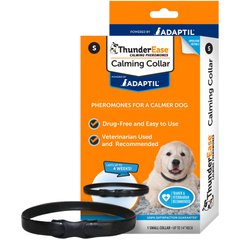Marking in Dogs
You may wonder why your dog is urinating in so many places when you take them out for a walk. This type of behavior is known as urine marking.
Urine marking in dogs is a natural behavior where dogs release small amounts of urine in various locations. Both male and female mark, but it’s more commonly seen in male dogs.
Urine marking can quickly become a nuisance behavior if your dog starts marking indoors. Here’s some helpful info on why dogs mark, how to tell urinary accidents from urine marking, and how to stop your dog from marking in the house.
Why Dogs Mark
For most dogs, urine marking usually begins around the time they reach sexual maturity, which can be between 6 and 12 months of age, depending on the size and breed of dog.
If you can identify why your dog may be urine marking indoors, then you can take steps to resolve the issue. Several reasons dogs may exhibit urine marking include:
Territory Identification
Many dogs will often urine mark to tell other pets that their territory has been claimed. Your dog may consider both your yard and the inside of your house to be their territory, and they may mark vertical surfaces.
Some dogs will frequently re-mark specific areas to make sure it is clear to other pets that this is their territory. Urine marking may also occur if there are animals outside near your house or apartment. Your dog may feel threatened by their presence and feel the need to mark their territory.
Male Dogs Interacting With Female Dogs
Male dogs will typically exhibit urine marking if there is a female dog in heat nearby. Urine marking is often a way for dogs to attract mates, so the presence of an intact female dog can influence this behavior.
Conflicts With Housemates
If there are one or more dogs within the household and there is tension or a disagreement between dogs, then one dog may start marking. The anxiety associated with the conflict as well the basic need to mark territory can lead to increased urine marking.
Changes in a Dog’s Environment
Some dogs will exhibit urine marking when there are changes in their environment. New furniture, new people, and new items that are normally not a part of the household can be targets for dogs to mark. The anxiety associated with a change in routine and structure in the environment can lead to urine marking indoors.
Submissive Urination
Some people note that if they talk loudly or their dog is easily startled, their dog may have an accident of a few drops of urine on the ground. This is different from urine marking, as submissive urination happens in response to your pet being startled or scared.
Shop Toys, Training and More
- ThunderEase Powered by ADAPTIL Calming Pheromone Collar for Dogs, Small, up to 14-in neck$19.99Chewy Price
- Nutramax Solliquin Soft Chew Calming Behavioral Health Supplement for Small/Medium Dogs & Cats, 75 count$19.99Chewy Price
- ThunderShirt Classic Anxiety & Calming Vest for Dogs, Heather Grey, Medium$41.64Chewy Price
- Purina Pro Plan Veterinary Diets Calming Care Liver Flavored Powder Calming Supplement for Dogs, 30 count$33.99Chewy Price
House Soiling vs. Urine Marking
There is a difference between a dog that is having urinary accidents in the house and marking. The main way to distinguish between house soiling and urine marking is to note how much pee there is and how often it happens.
When marking, your dog will often urinate small amounts in one or more locations. With house soiling, there will be a lot of urine, typically in one location, as if you had taken them outside.
Any time your pet is having inappropriate urination issues, it is worthwhile to have them examined by your veterinarian to rule out any possible underlying medical conditions.
Some possible causes of inappropriate elimination include urinary tract infection, crystalluria, kidney disease, endocrine disease, or other metabolic disease.
How to Stop Dogs From Marking in the House
Overall, urine marking is a natural behavior in dogs, but if it starts happening indoors, there are many ways to help manage it.
Neutering Your Dog
If your male dog is still intact, then getting him neutered can help reduce urine marking in your home. One research study showed that in 25-40% of dogs, castration at any age was effective in reducing urine marking by 90%.
Also, if your home is a multi-pet household, consider getting other pets neutered or spayed as well, including intact female dogs, as going into heat could trigger more urine marking in male dogs inside the household.
Thoroughly Cleaning the Soiled Areas
It is important to use an enzymatic urine cleaner when cleaning urine from areas in your home. These cleaners help reduce remaining odors and particles. If your pet smells any lingering urine odor, they may continue to re-mark the area. Always follow the directions on the product label for best cleaning results.
Preventing Access to the Area
If there is an area in your house that your pet continually marks, try blocking off access to the area. For instance, consider a baby gate, or covering the area with a rug or mat once the affected area has been sanitized to see if this deters your dog from continuing to mark.
Training and Counterconditioning
Do not yell at or punish your dog for urine marking in the house. Punishment will likely have the opposite effect and create anxiety or stress, which can trigger or make marking worse.
If you can monitor your dog when the behavior is happening, then intervening to stop them from marking can be helpful. Ideally, the goal would be to try to redirect your dog’s marking with a different behavior.
When your pet is about to mark, distract them by asking them to perform a task (such as “sit” or “stay”) to redirect their actions. Reward them with a treat.
Belly Bands
While working on the strategies above, you can also a belly band to prevent urine marking. These bands are similar to dog diapers and can be placed on male dogs to try to prevent urine marking indoors. Change the belly band as needed to prevent skin irritation.
Managing Anxiety
If you realize that anxiety is the trigger for your dog’s urine marking, then work on enhancing calming behaviors.
Using canine pheromones such as the Adaptil plug-in or spray in affected areas can be helpful. There are a variety of supplements that can help with anxiety in dogs. If your dog’s anxiety is severe, consult with your veterinarian about anxiety medications.
Featured image: iStock.com/TriggerPhoto
References
1. Urine Marking in Dogs. www.cliniciansbrief.com. Accessed February 4, 2022. https://www.cliniciansbrief.com/article/urine-marking-dogs
2. McGuire B. Effects of gonadectomy on scent-marking behavior of shelter dogs. Journal of Veterinary Behavior. 2019;30:16-24. doi:10.1016/j.jveb.2018.11.002




